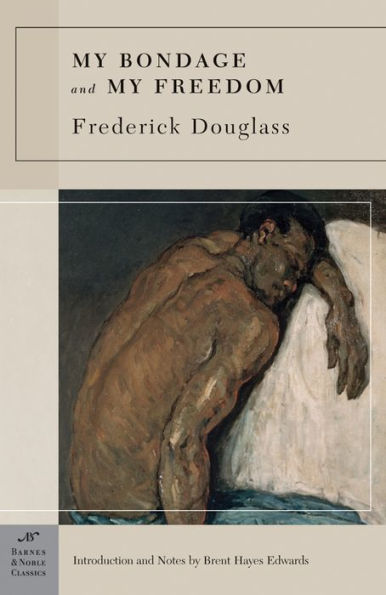- New introductions commissioned from todays top writers and scholars
- Biographies of the authors
- Chronologies of contemporary historical, biographical, and cultural events
- Footnotes and endnotes
- Selective discussions of imitations, parodies, poems, books, plays, paintings, operas, statuary, and films inspired by the work
- Comments by other famous authors
- Study questions to challenge the readers viewpoints and expectations
- Bibliographies for further reading
- Indices & Glossaries, when appropriate
Born a slave, Frederick Douglas educated himself, escaped, and became one of the greatest social leaders in American history. Although usually identified with the monumental Narrative of the Life of Frederick Douglass, An American Slave, Douglass produced two additional autobiographies, the second of which he called My Bondage and My Freedom.
A richer, deeper, and far more ambiguous work than the earlier Narrative, My Bondage and My Freedom reveals Douglass’s increased intellectual sophistication and maturity. In the decade that had elapsed since Douglass wrote Narrative, he had broken away from his antislavery mentors, successfully toured England, and established himself as an inspired speaker and writer. With the publication of My Bondage and My Freedom in 1855, Douglass became the country’s foremost spokesman for American blacks—free and enslaved—during the tense and politically charged years preceding the Civil War.
One of the highlights of My Bondage and My Freedom is the appendix, which contains excerpts from several of Douglass’s speeches, including perhaps his most famous, “What to the Slave Is the Fourth of July?”
Brent Hayes Edwards is Associate Professor in the Department of English at Rutgers University. He is the author of The Practice of Diaspora: Literature, Translation, and the Rise of Black Internationalism (Harvard University Press, 2003) and of numerous articles on twentieth-century African-American literature, contemporary poetry, Francophone Caribbean literature, surrealism, and jazz.
- New introductions commissioned from todays top writers and scholars
- Biographies of the authors
- Chronologies of contemporary historical, biographical, and cultural events
- Footnotes and endnotes
- Selective discussions of imitations, parodies, poems, books, plays, paintings, operas, statuary, and films inspired by the work
- Comments by other famous authors
- Study questions to challenge the readers viewpoints and expectations
- Bibliographies for further reading
- Indices & Glossaries, when appropriate
Born a slave, Frederick Douglas educated himself, escaped, and became one of the greatest social leaders in American history. Although usually identified with the monumental Narrative of the Life of Frederick Douglass, An American Slave, Douglass produced two additional autobiographies, the second of which he called My Bondage and My Freedom.
A richer, deeper, and far more ambiguous work than the earlier Narrative, My Bondage and My Freedom reveals Douglass’s increased intellectual sophistication and maturity. In the decade that had elapsed since Douglass wrote Narrative, he had broken away from his antislavery mentors, successfully toured England, and established himself as an inspired speaker and writer. With the publication of My Bondage and My Freedom in 1855, Douglass became the country’s foremost spokesman for American blacks—free and enslaved—during the tense and politically charged years preceding the Civil War.
One of the highlights of My Bondage and My Freedom is the appendix, which contains excerpts from several of Douglass’s speeches, including perhaps his most famous, “What to the Slave Is the Fourth of July?”
Brent Hayes Edwards is Associate Professor in the Department of English at Rutgers University. He is the author of The Practice of Diaspora: Literature, Translation, and the Rise of Black Internationalism (Harvard University Press, 2003) and of numerous articles on twentieth-century African-American literature, contemporary poetry, Francophone Caribbean literature, surrealism, and jazz.

My Bondage and My Freedom (Barnes & Noble Classics Series)
432
My Bondage and My Freedom (Barnes & Noble Classics Series)
432

Product Details
| ISBN-13: | 9781593083014 |
|---|---|
| Publisher: | Barnes & Noble |
| Publication date: | 01/30/2005 |
| Series: | Oz Series |
| Pages: | 432 |
| Sales rank: | 227,470 |
| Product dimensions: | 7.88(w) x 5.30(h) x 1.09(d) |
About the Author

